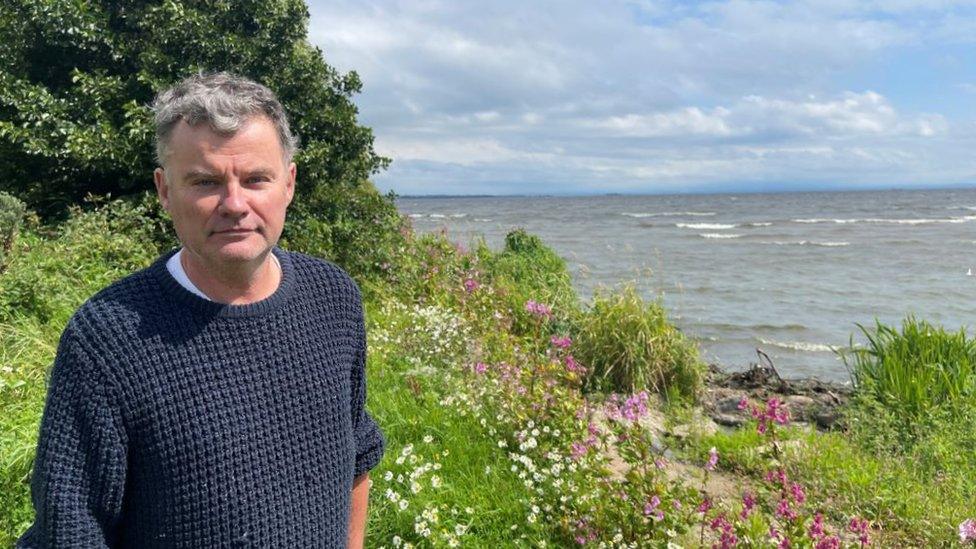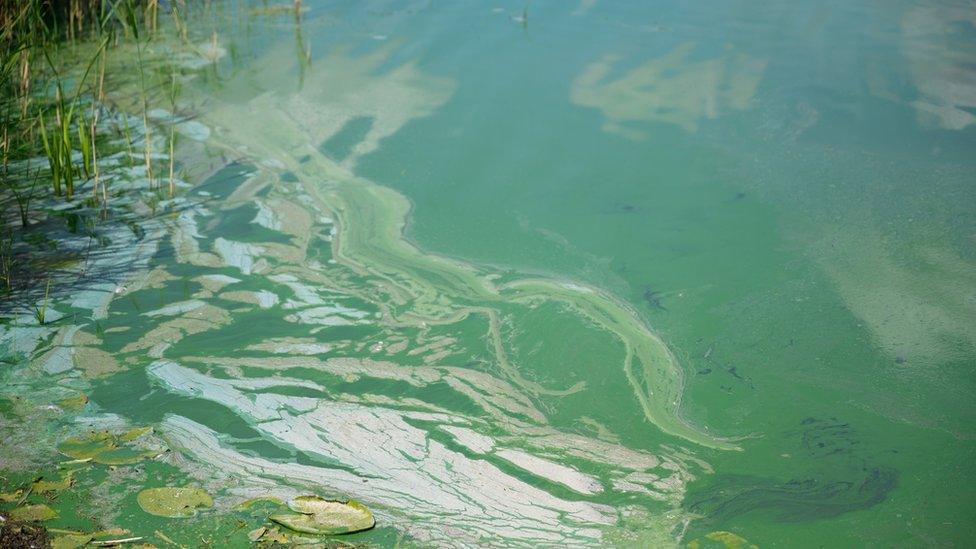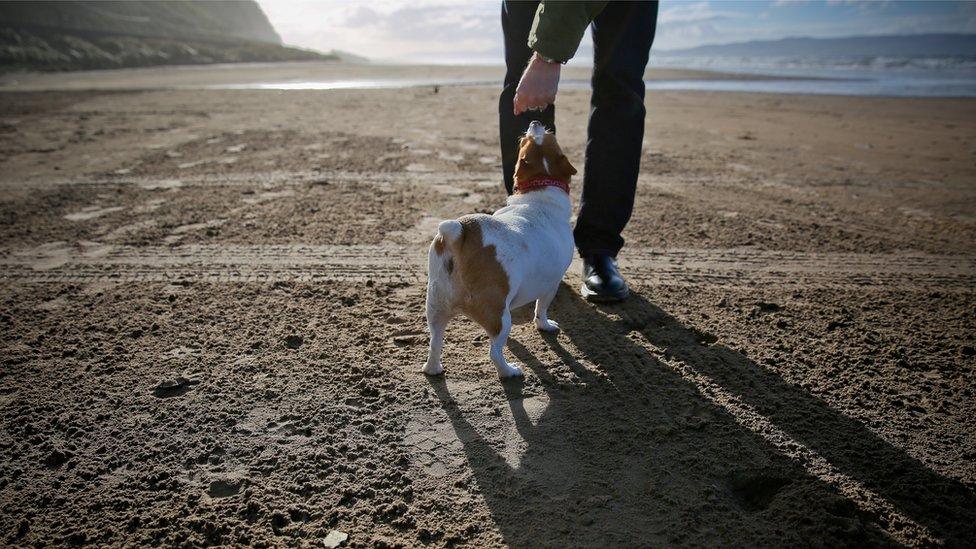Lough Neagh: Pollution putting livelihoods and lake at risk
- Published

Mick Hagan said he believed the lough was dying through the presence of sewage and slurry
Livelihoods - and even the viability of the lake itself - are at risk from the level of pollution in Lough Neagh, angling groups and politicians have warned.
It comes after a number of blue-green algae blooms over the summer in waters in and around Northern Ireland.
It has led to some bathing bans and warning signs being erected at popular tourist sites.
Lough Neagh is the largest body of fresh water in the British Isles.
In February, anglers in Country Antrim said they were worried about a major fish kill on the Crumlin River, which flows into Lough Neagh after reports of slurry polluting the water.
One angler at Ballyronan told BBC News NI that nobody is taking responsibility for the pollution of the rivers that flow into Lough Neagh, where commercial eel fishing has been important to the local economy.
Mick Hagan, secretary of one of the angling clubs on the Ballinderry River, has lived on the lough shore his whole life.

Blue green algae has been present at the lough and the waters around Northern Ireland in recent months
"The Ballinderry River gets heavily polluted from excess slurry run-offs, agricultural run-offs and factories," he said.
"The amount of slurry and raw sewage being pumped into Lough Neagh, it's just accumulating a huge amount of nutrients. From what I can see, the lough's dying.
"Lough Neagh has provided for generations. People's livelihoods are at stake. The numerous angling clubs, boating and other organisations will collapse if this isn't sorted."
The Department of Agriculture, Environment and Rural Affairs (Daera) has previously said that algae blooms can occur when there is abundant sunlight, still or slow-flowing water and sufficient levels of nutrients such as nitrogen and phosphorus.
However, ownership of Lough Neagh is the responsibility of no single department or group.
The Earl of Shaftesbury is said to own the banks and bed of the lough, but not the water itself.
'Passing the buck'
Tom McElhone is vice-chair of the community centre at Ballyronan Marina where signs warning of algae in the water can be seen.

Tom McElhone said he had lived on the shores of the lough for 60 years
He has lived on the shores of Lough Neagh for 60 years and said the numerous reports of algae is a symptom of a heavily polluted body of water.
"Our population of fish has collapsed. We've lost Lough Neagh eels," he said.
"It's all because of no management. You see a foot of this glar [algae] clogging marinas and fishing quays all around the lough."
SDLP councillor in Mid Ulster Malachi Quinn said reports have found the water quality in Lough Neagh is poor and it would take more than 20 years to improve it.
"First of all we need to get somebody to take responsibility for the lough and to look after it. There's a lot of passing the buck going on," said Mr Quinn.
"The issue is getting worse and worse every year, and quite frankly I think the lough is going to be destroyed."
Daera told BBC News NI it has a range of programmes to improve water quality and was working with partners and stakeholders.
"Whilst it is recognised that significant pieces of work are progressing, improvements in water quality will take a considerable period of sustained effort over many years, and Daera and the Northern Ireland Environment Agency cannot deliver this on their own."
The statement added: "Farmers and pet owners should ensure that animals do not have access to water that appears to be subject to a bloom, as the algae can potentially produce toxins that may be fatal to livestock/pets."
BBC News NI has also contacted NI Water and the Earl of Shaftesbury for comment.
Related topics
- Published10 August 2023

- Published9 July 2023
